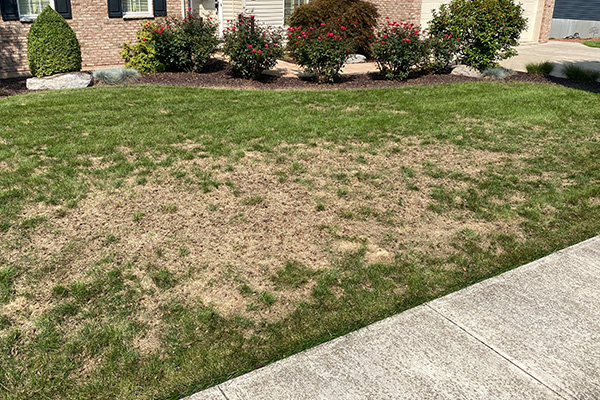
Introduction: What Causes Lawn Diseases in Spring?
Lawn diseases are one of the most common problems that homeowners face in the spring. These diseases can be caused by several factors, including environmental conditions, incorrect maintenance practices, and pests. Knowing how to identify and treat lawn diseases is essential for keeping your lawn healthy and green throughout the warmer months. In this article, we will discuss some of the most common causes of lawn diseases in spring and how to prevent them from occurring.
Common Types of Lawn Diseases & Their Symptoms
Lawn diseases can cause significant damage to grass and other plants in your yard. Knowing the common types of lawn diseases and their symptoms can help you diagnose and treat the problem quickly before it spreads. This article will discuss the most common types of lawn diseases, their symptoms, and how to treat them. We will also look at preventative measures that you can take to keep your lawn healthy. By understanding these common types of lawn diseases, you can better protect your yard from costly damage.
Snow Mold: This disease occurs when snow accumulates on the lawn and melts slowly, creating a moist environment that encourages fungal growth. Snow mold appears as circular or irregular patches of matted, straw-colored grass with white, pink, or gray mold on the blades. The best way to prevent snow mold is to clear snow from your lawn as soon as possible. If you do notice signs of the disease, lightly rake affected areas to promote air circulation and help the grass recover.
Brown Patch: Brown patch is a common fungal disease that appears as circular patches of brown or yellow grass with a dark ring around the edges. It thrives in warm, humid weather, making spring and early summer prime time for this disease. To prevent brown patch, make sure to water your lawn deeply and infrequently, and avoid watering in the evenings when the grass is more likely to stay damp overnight. If brown patch does appear, reduce watering and increase mowing frequency to improve air circulation and remove infected grass.
Dollar Spot: Dollar spot is another fungal disease that typically affects lawns in the spring and fall. It appears as small, silver dollar-sized spots of tan or white grass with reddish-brown borders. This disease is often caused by poor soil nutrition or inadequate watering. To prevent dollar spot, make sure your lawn receives adequate fertilizer and water, and avoid mowing your lawn when it is wet. If you do notice signs of dollar spot, increase watering and fertilization to help the grass recover.
Rust: Rust is a fungal disease that appears as a yellow, orange, or brownish-red powder on the blades of grass. It thrives in cool, wet weather and can be easily spread by mowers or foot traffic. To prevent rust, make sure your lawn receives adequate sunlight and air circulation, and avoid overwatering or overfertilizing. If rust does appear, mow your lawn frequently to remove infected grass, and avoid mowing when the grass is wet.
Best Practices for Preventing and Treating Lawn Diseases in Spring
Spring is a critical time for lawn care, as this is when diseases can start to spread and cause damage. To keep your lawn healthy and vibrant, it’s important to be aware of the best practices for preventing and treating lawn diseases in spring. This includes proper watering, mowing, fertilizing, aerating, and other steps that can help reduce the risk of disease. Additionally, being able to recognize the signs of lawn disease and knowing how to treat them quickly will help prevent further damage from occurring. By following these best practices for preventing and treating lawn diseases in spring, you can ensure that your lawn stays healthy throughout the year.
Conclusion: Taking Care of Your Lawn Now Can Help You Avoid Problems Later On.
In conclusion, while lawn diseases can be frustrating, they can be prevented and treated with proper lawn care. Make sure to water your lawn deeply and infrequently, mow frequently to promote air circulation, and avoid overwatering or overfertilizing. With a little effort, you can keep your lawn healthy and green all spring long. Give us a call at 570.459.1114 if you have any questions!

